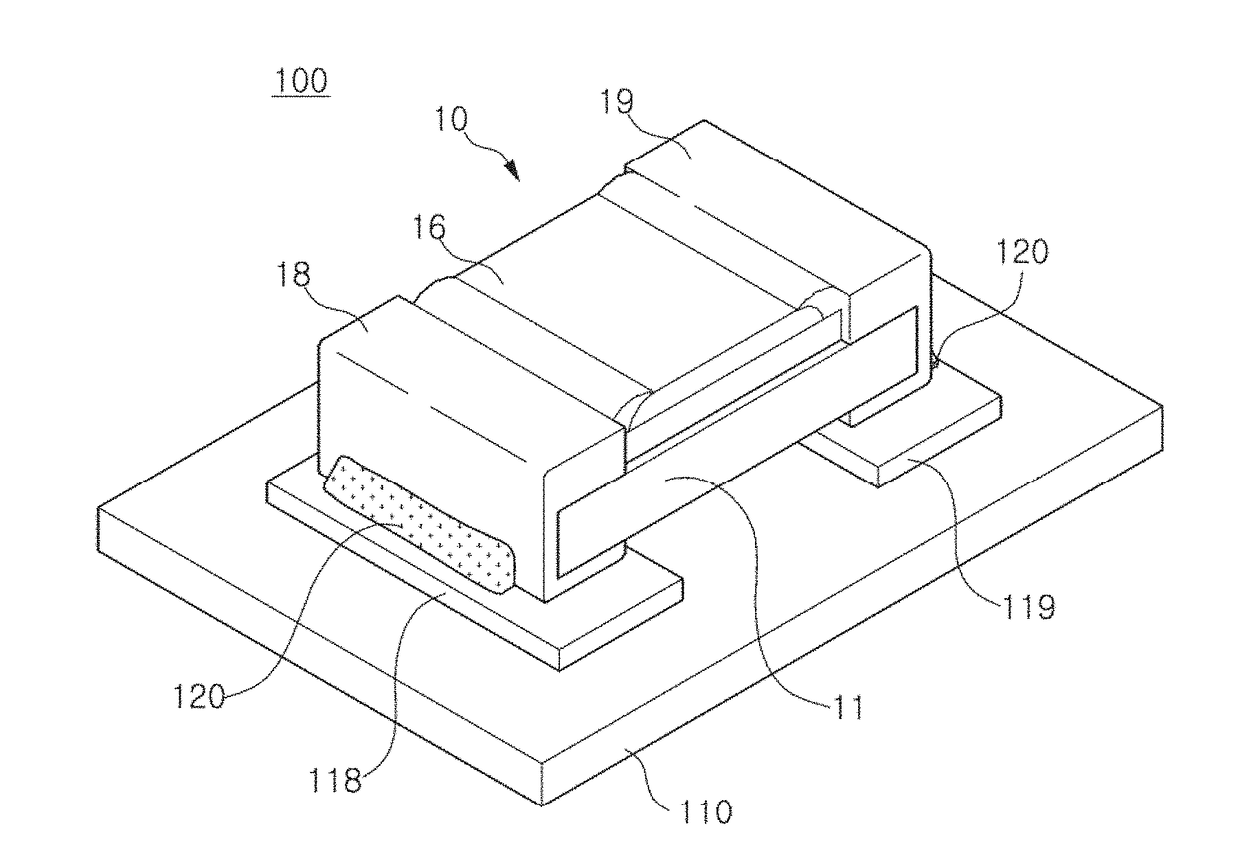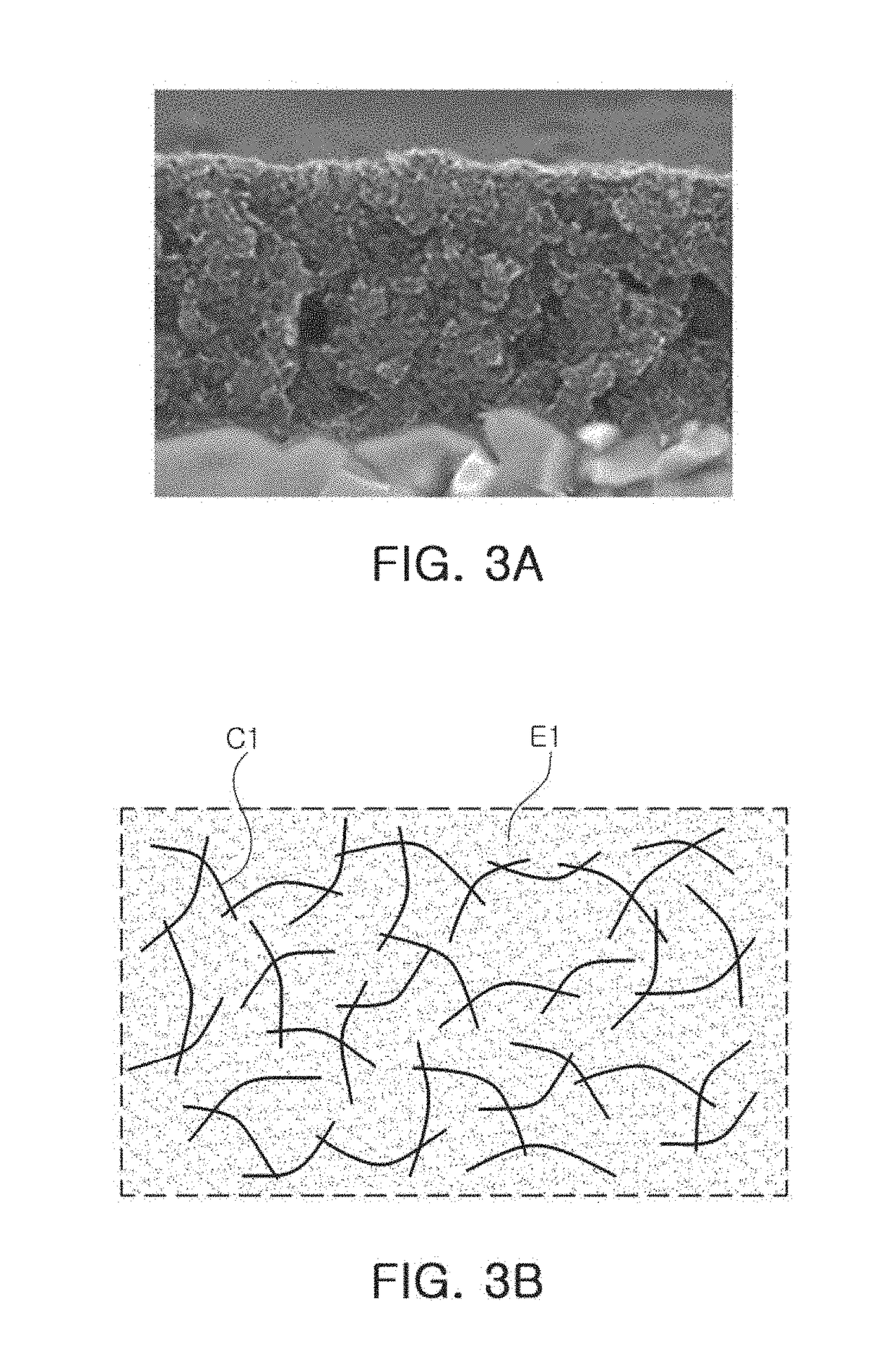Chip resistor element
a technology of resistor elements and chips, applied in the direction of printed circuit non-printed electric components association, sustainable manufacturing/processing, final product manufacturing, etc., can solve the problems of low conductivity, loss of performance reduced reliability of chip resistor elements, etc., to achieve excellent plating properties, low structure, and strong adhesion
- Summary
- Abstract
- Description
- Claims
- Application Information
AI Technical Summary
Benefits of technology
Problems solved by technology
Method used
Image
Examples
##ventive example 1
INVENTIVE EXAMPLE 1
[0067]First and second electrode protection layers (e.g., 17a and 17b) were manufactured in a chip resistor element similar to the chip resistor element illustrated in FIG. 1 depending on a condition of the present disclosure.
[0068]First, upper electrodes (e.g., 12a and 13a) were formed using a paste containing Ag as a main component. The first electrode protection layer (e.g., 17a ) was formed using a paste in which carbon nanotubes and an epoxy resin were mixed with each other in a weight ratio of 3:97. As the carbon nanotubes, a product having a diameter of about 8 nm and a length of 10 μm to 15 μm was used. The second electrode protection layer (e.g., 17b) was formed on the first electrode protection layer (e.g., 17a) using a paste in which a CuNi alloy (Ni: 70 wt %), carbon nanotubes, and an epoxy resin were mixed with each other in a ratio of 94:1:5. Then, external electrodes (e.g., 18, 19) were formed by continuously performing Ni plating and Sn plating.
##ventive example 2
Inventive Example 2
Evaluation of CuNi Alloy
[0076]An evaluation for a CuNi alloy that may be usefully adopted in the present exemplary embodiment was performed. Sulfuration resistance characteristics and specific resistance values of alloy powder particles for the respective samples were measured while changing a ratio between Cu and Ni (a content of Ni: 0 wt %, 20 wt %, 45 wt %, 80 wt %, 100 wt %). An electrode protection layer (e.g., 17) was manufactured by mixing 90 wt % of alloy powder particles having compositions depending on the condition described above with 10 wt % of epoxy resin. The electrode protection layer manufactured in the present experiment may be a second electrode protection layer (e.g., 17b).
[0077]First, an FoS test depending on an alloy ratio was performed on the respective samples. The FoS test was performed by the same method as the method described above. Additionally, changes of specific resistance values of the respective samples depending on an amount of a...
PUM
 Login to View More
Login to View More Abstract
Description
Claims
Application Information
 Login to View More
Login to View More - R&D
- Intellectual Property
- Life Sciences
- Materials
- Tech Scout
- Unparalleled Data Quality
- Higher Quality Content
- 60% Fewer Hallucinations
Browse by: Latest US Patents, China's latest patents, Technical Efficacy Thesaurus, Application Domain, Technology Topic, Popular Technical Reports.
© 2025 PatSnap. All rights reserved.Legal|Privacy policy|Modern Slavery Act Transparency Statement|Sitemap|About US| Contact US: help@patsnap.com



